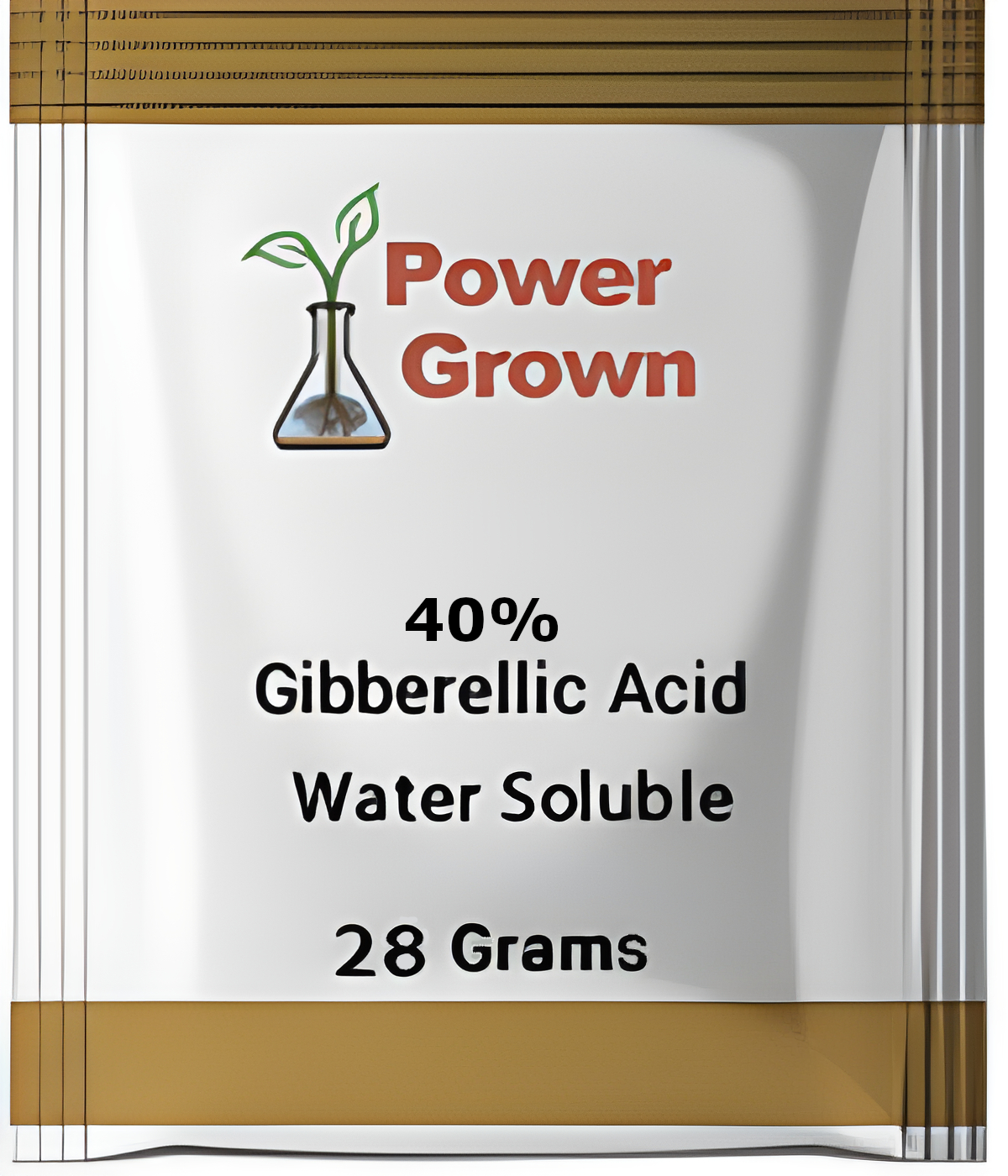An introduction to Plant Growth Regulators, (PGRs).
At Power Grown, we provide you with a variety of Plant Growth Regulators (PGRs) and hormones to help you achieve optimal results in your horticulture endeavors. We have been supplying our customers with Plant Growth Regulators, (PGRs) and fertilizers since 2011 with irrefutable, guaranteed results.
Recommended Bestsellers
-

28g Gibberellic Acid 40% GA3 – Water Soluble + Instructions
$24.99 Add to cart -

100 Grams Water Soluble indole-3-butyric Acid 99.9% (IBA-K) with instructions
$149.99 Add to cart -

Organic Fulvic Acid Powder 90% – 16oz
$24.99 Add to cart -

10 Grams, Brassinolide 0.2% CAS: 72962-43-7 with instructions
$19.99 Add to cart
Examples of Plant Growth Regulators, (PGRs) and their purpose.
With the proper application of the Plant Growth Regulators, (PGRs); gardeners, researchers, hobbiests, and farmers induce a particular plant response.
For example, two Plant Growth Regulators called Indole Butyric Acid, (IBA), and naphthalene acetic acid, (NAA) are used to induce root formation. Also, it promotes root growth to help clone plants from cuttings and for use in tissue culture.
Another Plant Growth Regulator, (PGRs), called Triacontanol increases the ability to generate more photosynthesis that results in larger, bushier plants.
In addition, Chlormequat Chloride, another Plant Growth Regulator, (PGRs) is a Gibberellic inhibitor which stops cell elongation resulting in thicker buds and stalks. Consequently, you get a shorter, more compact looking plant.
A Plant Growth Hormone called Gibberellic acid promotes cell stretching which the outcome is stimulates rapid stem growth and increased seed germination.
A Plant Hormone called 6-Benzylaminopurine, (BAP), a synthetic cytokinin, causes cell division that allows use for tissue culture. 6-Benzylaminopurine, (BAP), also stimulates bud and branch formation
Brassinolide is a plant growth steroid. Brassinolide promotes stem elongation and cell division. Indole-3-acetic acid is the best naturally occuring plant growth regulator in the auxin class.
Articles About Plant Growth Regulators And More.
In conclusion, There are both natural and synthetic Plant Growth Regulators, (PGRs), or Plant Hormones. But, with a specific concentration, experimentation and the correct application; you can achieve the desired outcome for your plants or crops.
Join our Plant Growth Regulator
Support Group community…
Where we help each other and share our experiments and results. PGR’s are used by a small community and there is much to be learned. Let’s help each other!

